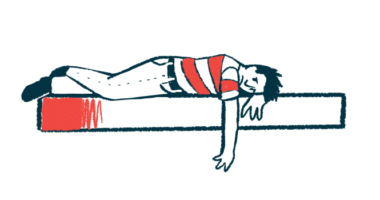Depression, other comorbidities linked to harsher AS symptoms
Two or more such conditions found in 49% of 1,270 patients in study

Two or more comorbidities affected nearly half of the ankylosing spondylitis (AS) patients in a large study of the disease, with the most common coexisting conditions being uveitis (eye inflammation), depression, and hypertension (high blood pressure).
Those with no comorbidities were younger and had shorter disease duration, the researchers reported, whereas patients with two or more coexisting conditions — and particularly those with depression — were likely to experience harsher AS symptoms over time.
“This broader view of a patient’s health is crucial in the care of AS,” the researchers wrote, adding that a better understanding of the impact of comorbidities may help identify those “at the greatest risk of worse outcomes earlier.”
The study, “Multimorbidity phenotypes in ankylosing spondylitis and their association with disease activity and functional impairment: Data from the prospective study of outcomes in ankylosing spondylitis cohort,” was published in Seminars in Arthritis and Rheumatism.
Comorbidities unusually frequent among people with ankylosing spondylitis
AS is a type of arthritis mainly marked by inflammation of the spine, particularly in the sacroiliac joints, where the base of the spine meets the pelvis. Pain and stiffness in the lower back and hips are common.
Accumulating evidence suggests that comorbidities also are more common in people with AS than in the general population. “Comorbidities in AS accumulate prior to AS onset and over the disease course,” the researchers wrote.
To evaluate the frequency of comorbidities, and how they impact disease activity and functional status, the researchers drew on data from the Prospective Study of Outcomes in Ankylosing Spondylitis, an observational study of patients.
Data covered 1,270 patients at four clinical sites in the U.S. and one in Australia. Their mean age was 44.6, and they had been experiencing symptoms of AS for a mean of 21.6 years prior to entering the study. Most were white (80.1%), and about one-quarter (25.6%) were women.
On average, patients had 1.9 coexisting conditions. Nearly half (49%) had two or more comorbidities, and 114 (9%) had five or more. Uveitis, a painful inflammation of the eye that can affect vision and is considered a disease “extra musculoskeletal manifestation,” was present in about one-third (33.9%) of these people.
Depression was the most common comorbidity not considered a direct AS manifestation, affecting 31.4% of the patients, followed by hypertension (26.1%).
Researchers grouped patients into five clusters depending on common coexisting conditions: depression (25.3%), hypertension (22.4%), uveitis (21.6%), no comorbidities (18.7%), and miscellaneous others (12.1%).
Patients with no comorbidities were a mean of 8.2 years younger than the overall group, with evident disease symptoms for a mean of 14.4 years, a significantly shorter duration compared with the other patient groups.
Higher percentage of women in patient group with depression
Women were in significantly higher proportions among patients grouped by depression and uveitis relative to those with no comorbidities, while a greater number of comorbidities aligned with the study’s depression and hypertension clusters.
Hypertension group patients tended to be older and to have a longer disease duration.
Disease activity was monitored over time using the Ankylosing Spondylitis Disease Activity Score (ASDAS), where higher scores indicate more active disease. For patients with two or more comorbidities, the mean ASDAS was 0.2 points higher than that in people with one or no commorbidities.
Mean scores on the Bath Ankylosing Spondylitis Functional Index (BASFI), which measures a person’s ability to do daily life activities like bending over to pick up a dropped pen, getting up from of a chair or climbing steps, also were 0.5 points higher in patients with two or more comorbidities, indicating poorer functional status.
Over a median follow-up of 2.9 years, the mean number of comorbidities was significantly higher in people with depression (3.7 comorbidities) and hypertension (3.6 comorbidities) than among those with no comorbidities at study entry.
The strongest evidence of greater disease activity and a poorer starting functional status linked with depression, which also associated with a 0.5-point increase in ASDAS and a 1.2-point rise in BASFI scores over time.
“While both depression and hypertension clusters were associated with the highest number of morbidities, only the depression cluster was associated with clinically significant differences in disease activity and functional scores over time,” the researchers wrote.
“In addition to the number of morbidities, the type of morbidity seems to be important … in AS,” they concluded. “Further studies should examine optimal screening and management strategies for depression and their effect on outcomes in AS.”







